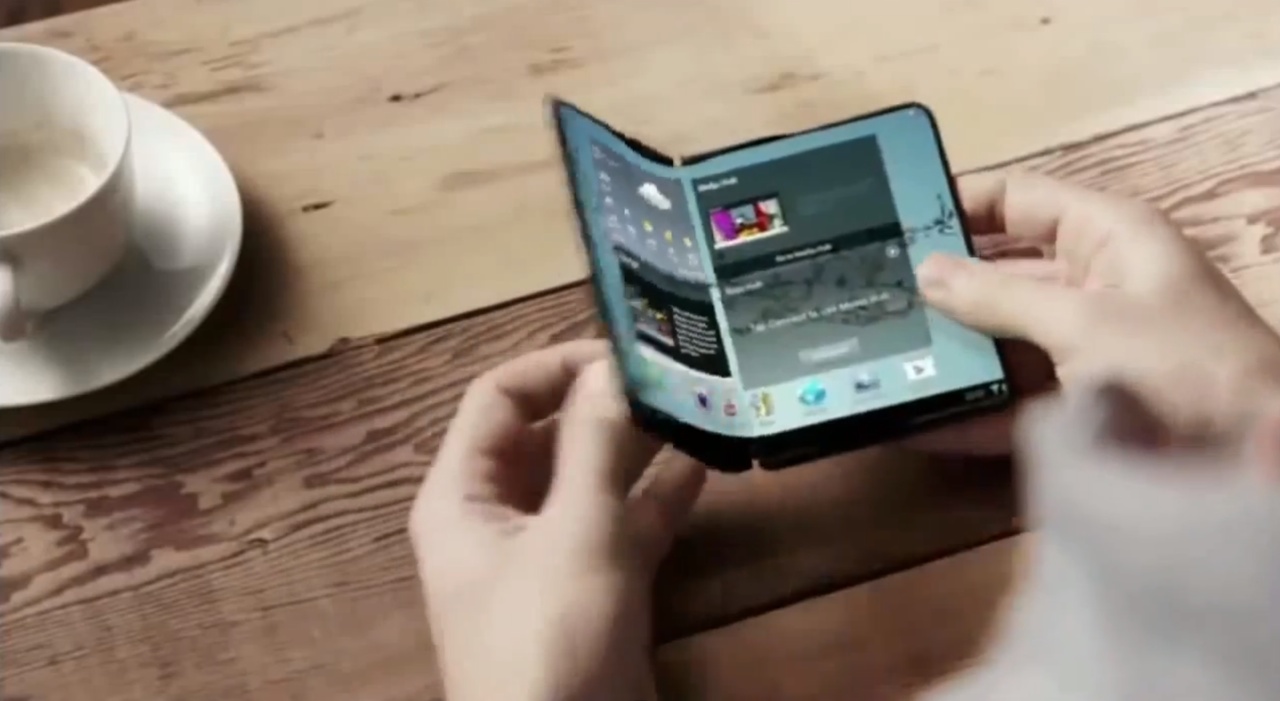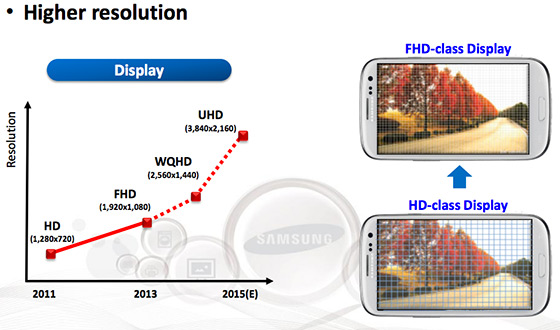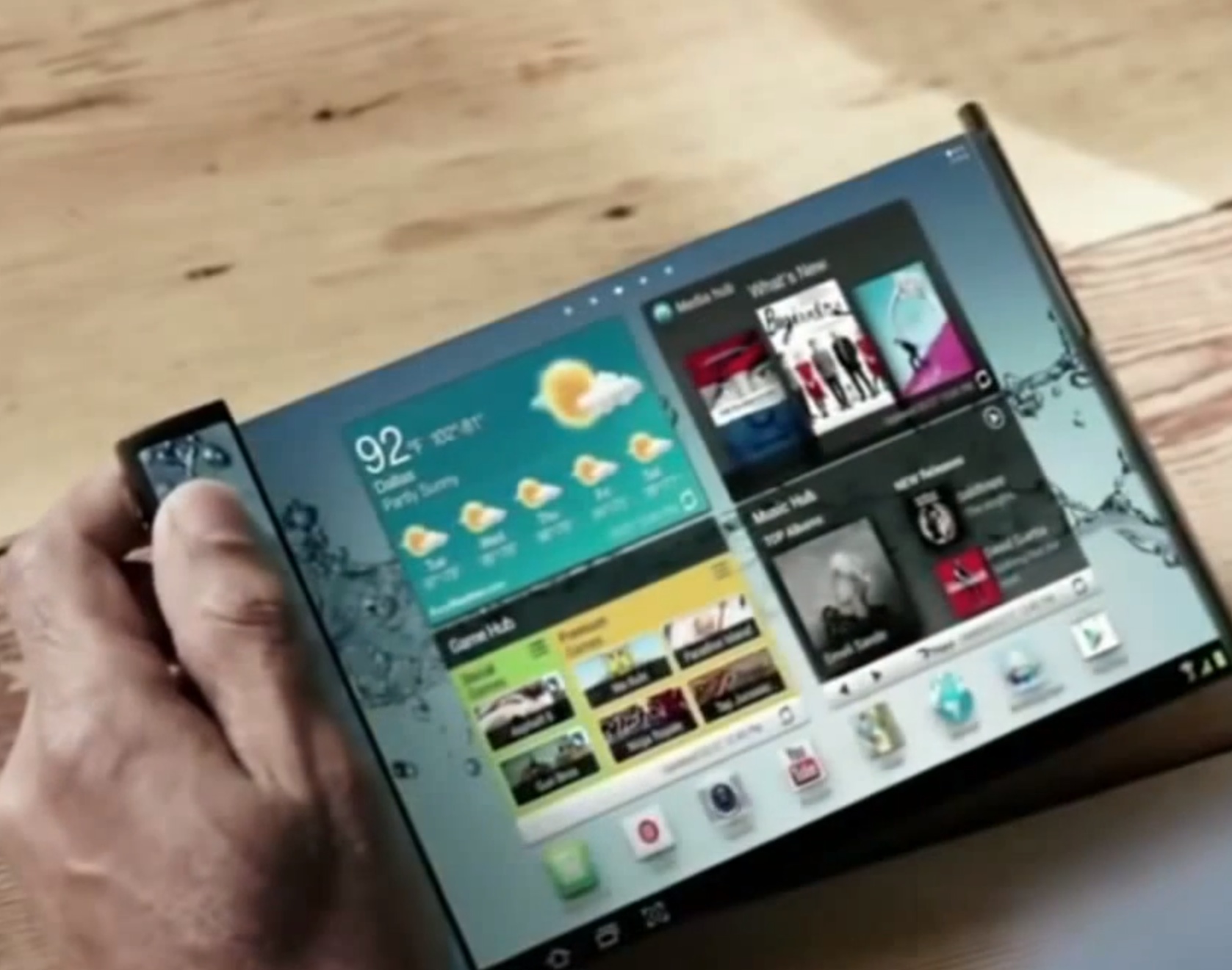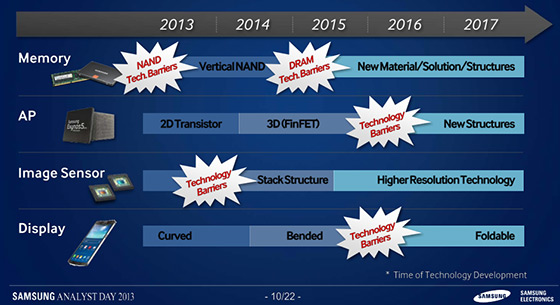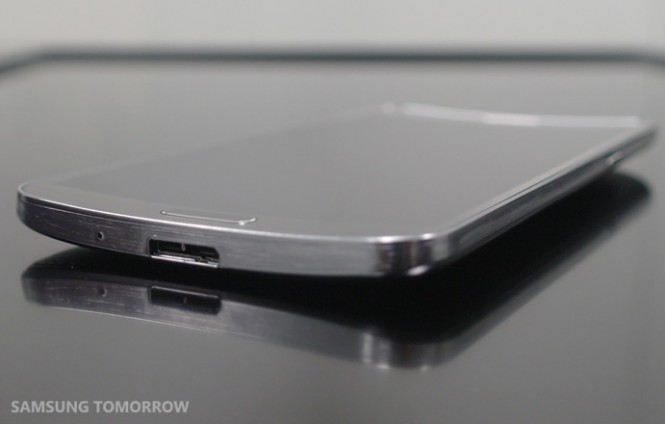One of the thrills of writing about technology is that more often than not one gets to blog about the next big thing always lurking just around the corner. Fans of technology have been living in the future forever and today Samsung spoke to the technophiles, sharing some of the upcoming technologies its mobile display unit is aiming to bring to market in 2014 and 2015.
We’ll be living in the post-Retina world next year as Samsung preps to double the pixel count on smartphone and tablet screens, we’re being told. And by 2015, your mobile devices will have full 4K resolution displays – that’s a whopping 3,840-by-2,160 pixels normally found on Ultra HD TV sets, or four times the pixels of the full HD (1,920-by-1,080) Blu-ray movies.
By comparison, the iPad’s Retina display maxes out at 2,048-by-1,536 pixels. But that’s just scratching the surface…
On the iPhone 5/5s/5c’s four-inch screen, Retina means 1,136-by-640 pixel resolution, enough for the 326 pixels per inch density. But Samsung is now developing 560ppi AMOLED panels for smartphones that will be a reality as early as next year.
According to slides shown at Samsung’s Analyst Day gathering today, this is 78 percent more pixels on a typical five-inch smartphone at a whopping 1,440p resolution (there’s your new buzzword).
And just like that, Apple’s Retina display suddenly feels a bit long in the tooth.
The Verge explains:
The display category was highlighted by the promise of 560ppi AMOLED panels for phones. Combine that with the 1440p resolution and you get a 5.2-inch handset — the same dimensions as on LG’s 1080p G2, but with 78 percent more pixels. And if that’s not enough, we’re told to look forward to 4K resolutions — also known as Ultra HD or 3840 x 2160 — in 2015.
I thought bendable screens were a 2013 thing.
They’re also promising foldable mobile displays with twice as many pixels by 2015.
Anyhow, check out this video from the future.
http://www.youtube.com/watch?v=g3x-bAWZWPM
You have to give it to Samsung’s marketing department for putting together this vid.
For what it’s worth, Samsung at CES 2013 back in January showed off prototypes of bendable displays. At the time, the company aimed to create devices with flexible screens by year’s end, but plans have been scrapped as the technology obviously isn’t feasible enough for commercialization (yet).
Other stuff on the horizon: a Samsung-built 16-megapixel smartphone camera sensor in 2014 and 64-bit mobile processors with a customized ARM core.
We of course recently heard about 64-bit Samsung chips in the works.
One thing the company didn’t talk about today: its own fingerprint-reading solution. From what I understand, Samsung’s Touch ID is at least a year away, and that’s on the conservative side.
This is all very high tech, but you’d be hard-pressed to bet against Samsung.
Samsung gets many things wrong but its marketing techniques are very very clever.
— Matt Brian (@m4tt) November 6, 2013
Samsung Display is the world’s top mobile screen maker – even Apple up until recently has been sourcing the vast majority of iPhone and iPad screens from Samsung. Just to illustrate how strong the business is, Samsung Display president Kim Ki-nam today said that cumulative AMOLED panel sales volume will surpass 500 million units by year-end.
He also said Samsung Display will enter the wearable device and education markets with AMOLED panels and added that future investments will focus on AMOLED tech.
The South Korean conglomerate has recently rolled out a phone with a curved display (shown below) and has been working for some time to commercialize bendable screens.
4K smartphones, you say?
Over in China, a company called Vivo recently teased the future with its Xplay3S smartphone that boasts a 2K (1,440-by-2,560 pixels) screen, matching the pixels on my 27-inch Apple Thunderbolt Display.
Samsung’s Galaxy Round smartphone.
But you have to love Samsung for trying: recently, they introduced the Galaxy Round smartphone with a curved screen that doesn’t seem to serve any real-life purpose other than show off its technological prowess.
As for Apple, the patents, big media reports and early iPhone prototypes have all but proven that the firm is no stranger to foldable and curved display technology. In fact, Apple is apparently researching a wearable device with a curved screen, probably the iWatch project we’ve been hearing a lot about for a fairly long time now.
Whether or not bendable screens take off or simply end up being a 2015 buzzword is anyone’s guess.
One thing’s certain: flat glass screens are so 2012.
By the way, Samsung said during the conference it shipped over a hundred million Galaxy S and Note units during 2013.
Thoughts?
